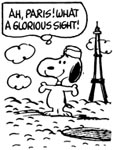President Mahmoud Ahmadinejad (hand raised)
Saeed Jalili, Iran's chief nuclear negotiator, met the UN
Security Council's five permanent members plus Germany for talks in
Switzerland, with the possibility of a rare bilateral meeting between Iran and
the US.
The meeting in Geneva came a week after the
disclosure of a second Iranian uranium enrichment plant raised
tensions over Tehran's nuclear ambitions.
Iran had said its nuclear programme was not up for discussion in the talks and would
like to focus instead on regional security issues.
But Western diplomats hoped Iran would be willing to talk
about its nuclear programme and the second enrichment facility, which the
US, Britain and France revealed a week earlier.
If Iran was willing
to address the nuclear issues, then there probably would be subsequent
meetings, PJ Crowley, the US state department spokesman, said in Washington.
"That process will take some time," he said.
"We're not going to make a snap judgment on Thursday. We're
going to see how that meeting goes, evaluate the willingness of Iran to engage
on these issues."
Western
powers were also keen to gauge Russian and Chinese reaction to previous week's
announcement that Tehran had been concealing the uranium enrichment plant at
Qom.
Iran
said its nuclear programme was for peaceful purposes and had already defied five
UN Security Council resolutions demanding it suspends all sensitive nuclear
activities.
Speaking
to Al Jazeera, John Large, an independent nuclear consultant, said: "It's
quite a complex area to actually decipher whether the effort is going into a
civilian programme or into a military programme.
"There
are the associated industries like the missile delivery systems, the
development of missiles, we have seen the launch this week of quite
sophisticated missile delivery systems.
"So
you're looking at all the jigsaw pieces coming into place and I'm afraid the
conclusion that is coming out of this is that these jigsaw pieces mean that
there is a strong weapons programme underway."
Mohamed
El Baradei, the outgoing head of the UN's nuclear watchdog, said on
Tuesday that Iran was "on the wrong side of the law" by not
declaring the second plant.
"Iran
was supposed to inform us on the day it was decided to construct the facility," he
said.
Iran
declared the facility only after it had been revealed by Western intelligence
agents.
Washington expressed its willingness to hold one-on-one meetings with Iranian
negotiators, a move that comes alongside a possible softening in Iran's
approach.
According
to Iranian state-run news agencies, Mahmoud Ahmadinejad, the Iranian president,
announced in Tehran that Iran would be willing to fuel Iran's nuclear
facilities with uranium purchased from a third party country.






















